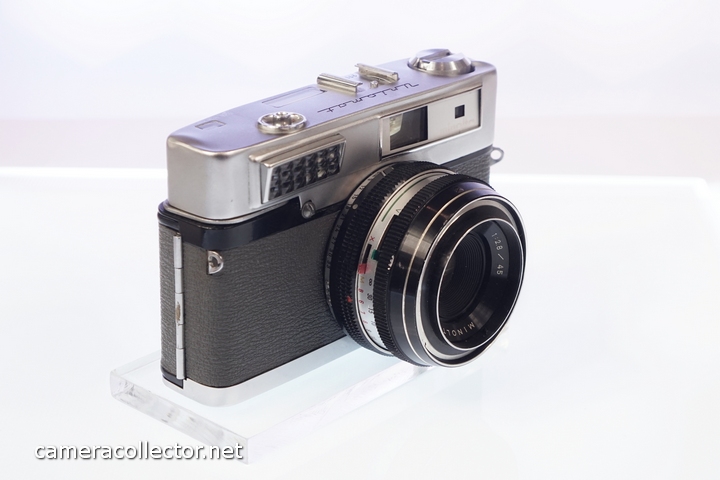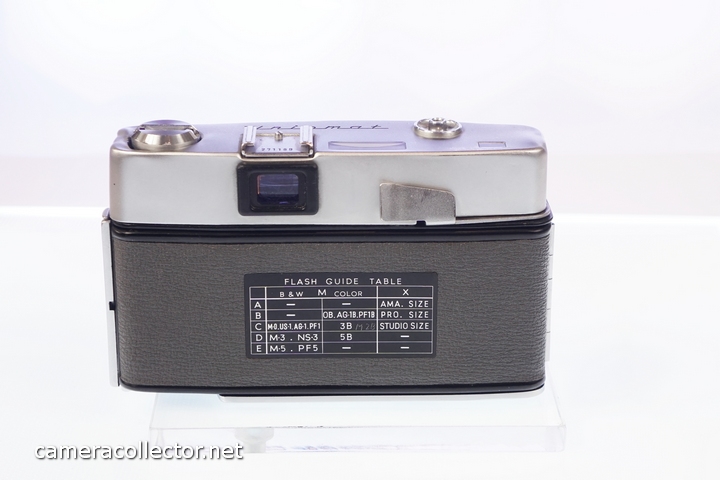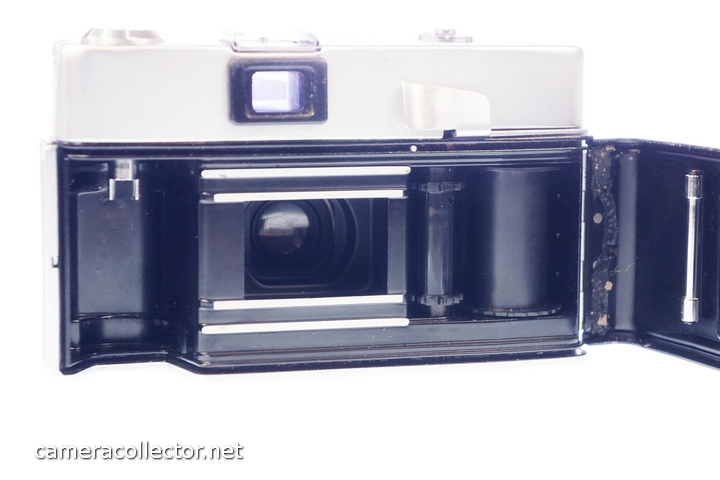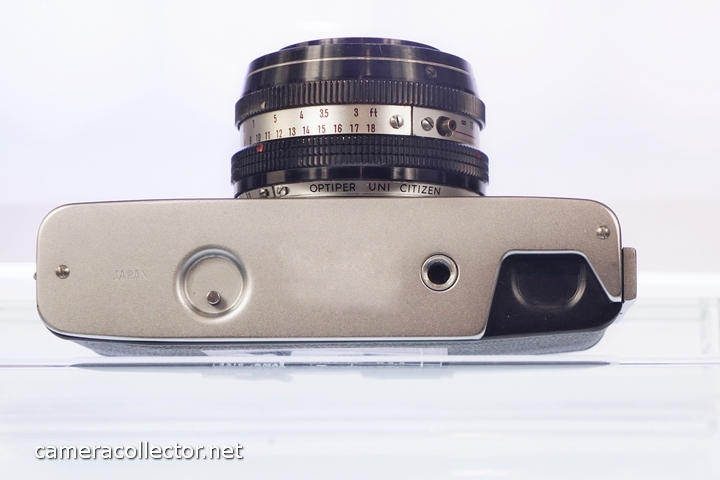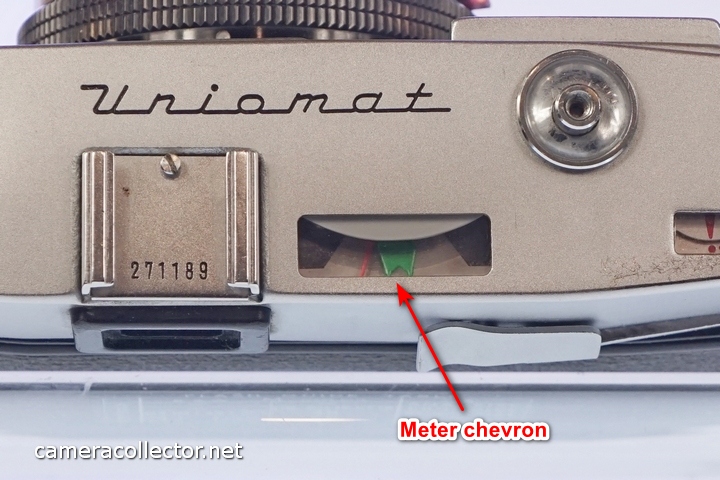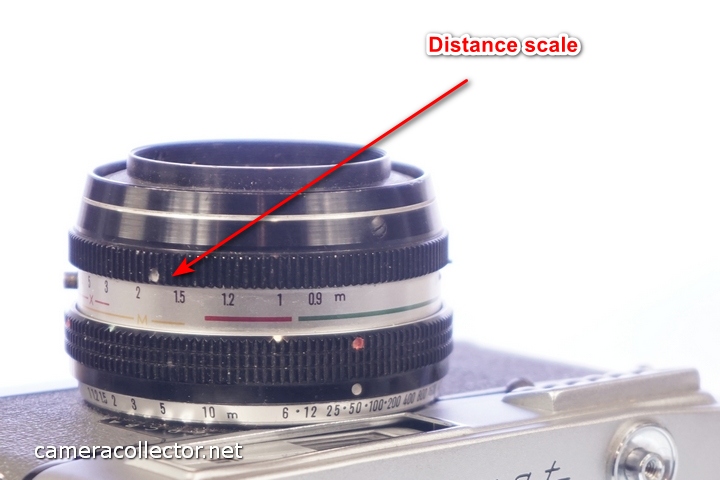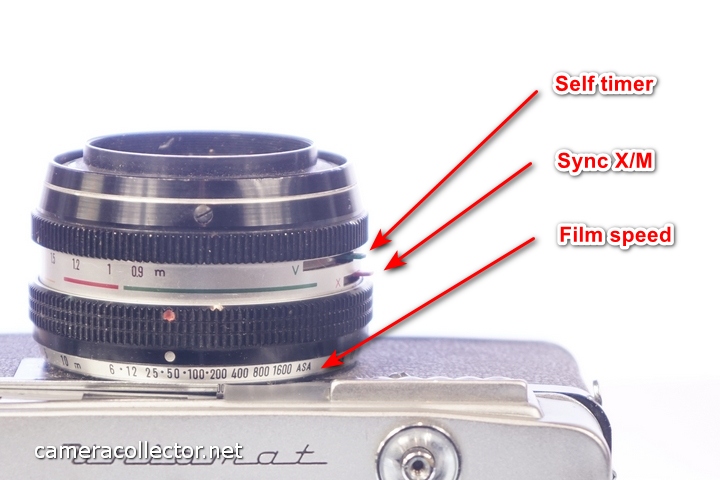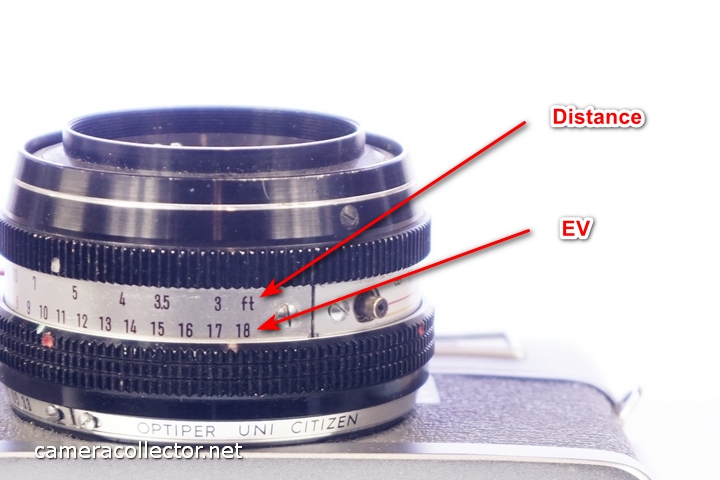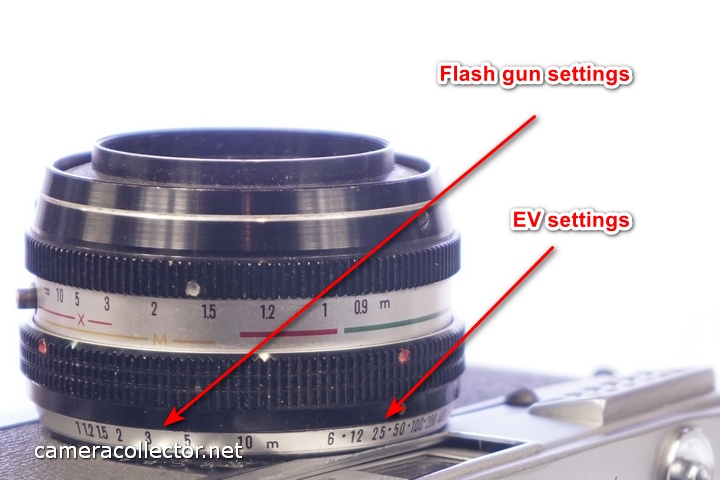Minolta Uniomat
Minolta Uniomat
In the late 1950s, Minolta, then Chiyoda, had transitioned from the TLR and Klapp models towards 35mm compact cameras. The first in that trend were the Minolta 35 models, then came the Minolta A group. All Japanese camera makers made that move; most did not see the 1980s. See a selection at the rangefinder model pages.
The early 35mm cameras were manual, and the next step in the race to capture more users was adding a meter. Pro photographers had a dedicated light meter in their tool kit, whereas for amateurs, it was an extra expense and one more item to forget at home. I began shooting in the 1960s, and a meter was a nice thing to have, but costly enough to remain on the wish list.
The Minolta Uniomat was introduced as an automatic camera, as a self-thinking automatic exposure camera. It was far from today’s concept of ‘auto’, but I guess it made enough waves to carve a niche in the hobbyist upgrading to the next level.
The camera was odd at best. It seems Minolta had an idea and direction, but the result was a complex camera, hardly suitable for a dad to capture the kids. The settings are scattered throughout the lens assembly, overlapping and confusing, with no way to adjust them for manual use. I do not know how popular the Uniomat models were, but due to the short model life, I suspect it was not a smashing success. It was succeeded by the Hi-Matic models, a ‘normal’ camera line that lasted for two decades.
There were three Uniomat models, all marked the same.
- The first model of 1960 had a black frame around the selenium meter lens, a dark gray front viewer panel, and the bottom marked Chiyoda Kogaku.
- The second model of 1961 had a chrome-finished frame around the meter and the front silver-finished viewer panel, and a flash settings guide on the back. There is a mention of a lever to set the film speed on this version, but I do not see it. This was the model that sold the most, and it sold in the US under Anscoset II CdS.
- The third model of 1964 replaced the selenium meter with a CdS, with the meter lens within the front lens assembly perimeter.
The camera ‘auto’ function might be deceiving. It is best described as a pre-programmed combination of the shutter speed and the aperture opening, but there is no separate aperture mechanism. The shutter may open wholly or partly, as initially programmed. See more here.
The Uniomat trio use no battery for the meter or the shutter. To shoot, set the film speed ring that locks with the shutter speed ring, and aim the meter at the subject. The meter reading lens is on the top, where a green chevron moves according to the film and shutter speeds. The red meter needle will move according to the light reading; adjust the speed dial to align the chevron with the needle. As there are no aperture settings, use the film speed dial to compensate as needed. The camera can only be used with a live light meter; once it dies, so does the camera.
- The body is large and heavy, still of the all-metal generation.
- Unlike most cameras, the skin is gray rather than black.
- The top has the usual self-reset frame counter, the meter reading window, a cold accessory show and the rewind fold-up crank handle.
- The back opens via a sliding bolt at the side.
- The viewer is large and bright, with a well pronounced parallax frame and distance patch.
- The front has a large selenium meter lens, slightly angled down. A silver-finished panel with the two rangefinder windows. The viewer window is curved and mirror-like, a precursor to the selfie culture.
- Inside is all metal, well finished, contributing to the camera’s weight. Machined film track, featuring two cogs that direct the film, and a large, friendly take-off drum. A roller guide and pressure plate are on the back cover.
- The lens assembly has an eclectic settings collection:
- Closest to the body is a ring with three marking sets: film speed in ASA, the same in DIN, and distance in meters for use with a flash gun.
- A scale of A to E is printed at the base of the lens barrel. It is for flash gun use. To relate to the flash distance setting, refer to the table at the back of the camera. It assembles several film and sync combinations, and points to an A to E scale. With flash use, match the right red dot on the first ring with the recommended letter.
- The next ring is coupled with the above ring and unlocks with a forward pull. It has two white dots flush with that ring, matching the ASA and DIN scales. Further, there are two red dots. The right is described in the above paragraph. The left is the film speed setting. Pull out the ring and match either white dot with the film speed used, ASA or DIN.
- There is no shutter speed indication, but an EV scale. It is marked red or black on the fixed ring in front of this ring. The left red dot, which sets the film speed, shows the selected value.
- Turning the combined rings moves the green chevron in the meter reading window at the top cover.
- Next is a fixed ring with markings galore. The bottom/left is the EV, described above. In front of it is the distance scale, marked in feet. A metric scale is at the antipode. On the left side is the flash sync selector, one option marked X, so the default is M. The self-timer lever is next to it, marked V.
- At the front is the rangefinder distance ring, with two white dots, each pointing to a distance scale, metric or imperial. Where the scale is marked red, use the X sync.
- True to Minolta’s naming convention, this assembly is baptized as the Exposure-Set ring.
It is cumbersome indeed. It seems Minolta had to invent the wheel and wasn’t sure if it should be square or hexagonal. I feel for the aspiring photographer trying to make sense of this.
For the collector, it is a unique camera, with out-of-the-box thinking. This scheme was not followed in other Minolta cameras or with other makers. It is a nice conversation piece. For the shooter, I would avoid it. Note that the camera cannot be used with a dead meter. The camera I have suffered a significant trauma, either kicked or dropped, and was repaired by a blind blacksmith. Further, the front viewer panel is loose. The camera isn’t worth the time to repair, so I’ll leave it as is. See the images.
| Camdex list number | 5604 |
| Brand | Minolta |
| Model | Uniomat II |
| Manual | Butkus |
| Value | Uniomat I Uniomat II Uniomat III Anscoset II CdS |
| Format | 35mm |
| Introduced | 1961 |
| AKA | Anscoset II CdS |
| Country | Japan |
| Qty made | |
| Initial price | |
| Currency | |
| Type | Rangefinder |
| Body material | Metal |
| Mode | Auto |
| Weight | 700 gr, Body with lens |
| Class average weight | 640 gr, Body with lens |
| ASA range | 6-1600 |
| Kit lens | 2.8/45 |
| Lens make | Rokkor |
| Filter size | 40.5mm |
| Lens mount | Fixed lens |
| Mount size | N/A |
| Aperture | None, different shutter opening. |
| Shutter | Leaf |
| Shutter make | Citizen Optiper |
| Trigger | On top |
| Winder | Lever |
| Shutter cocking | Winder |
| Light meter | Selenium, external, coupled |
| Loc | No |
| Speeds | Unknown |
| Mirror | N/A |
| Viewer | Coupled rangefinder |
| DOF preview | No |
| Exposure lock | No |
| Exposure compensation | No |
| Shoe | Cold |
| External sync | X/M |
| Sync speed | |
| Timer | Yes, mechanical |
| Battery, original | N/A |
| Battery, replacement | N/A |
| Battery voltage | N/A |
| Integral flash | None |
| Other | |
| More | |
| Service / repair links | See camerlog.com |



